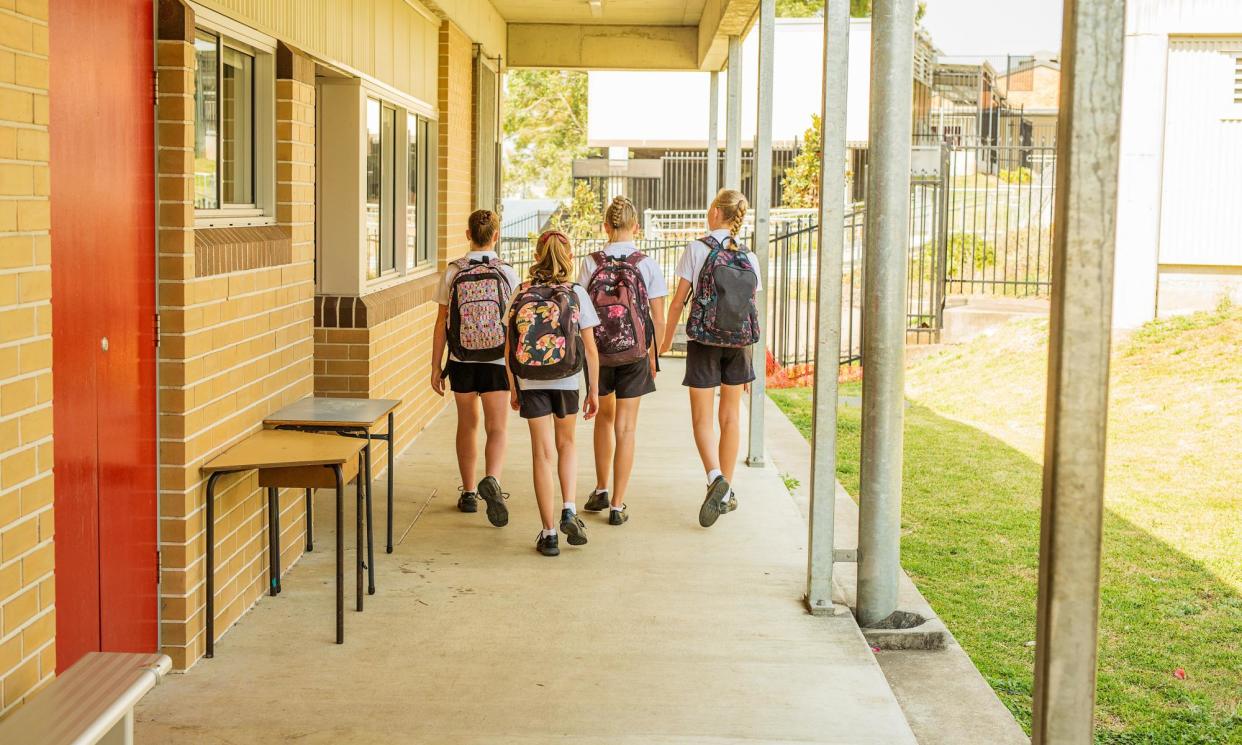‘Deliberate lie’: education lobby group says ‘landmark’ school agreement falls short of 100% funding

Education experts say a “landmark” deal to fully fund Western Australia’s public schools by 2026 is “not good enough” and still lets the state government “off the hook”.
The “statement of intent”, announced on Wednesday by education minister, Jason Clare, would increase funding for Western Australian public schools by $1.6bn over the next five years, with $770m coming from the commonwealth.
“Fully funded” refers to the school resource standard (SRS), which estimates how much public funding a school needs to meet students’ needs.
Under the statement of intent, the federal government would increase its public school funding from 20% of the SRS to 22.5%, with the state government to lift its own funding by an equivalent amount to reach 100%.
Related: Education ministers unite to demand Albanese government fix teacher shortages
Currently no public school in Australia, except for schools in the Australian Capital Territory, is funded at the SRS level – a benchmark for required funding based on student needs.
But the Australian Education Union (AEU) president, Correna Haythorpe, said the deal was “not good enough”.
She said the deal allowed state governments to continue “fudging the books” using a depreciation tax which allows them to claim about 4% of their public school funding share on non-school expenditures like transport, capital depreciation, regulatory bodies and preschools.
“Some money is not enough money. This has been going on for far too long – the hero moment needs to be now.”
When questioned over the 4% tax on Wednesday, Western Australia’s minister for education, Tony Buti, said it had “always been considered” as part of the funding agreement, adding “every other state does it”.
The 4% depreciation tax equated to around $230m of WA’s funding share in 2023.
“That 4% goes to ensuring that we have a quality education,” Buti said.
Haythorpe said his comments were “complete rubbish”, adding that former shadow minister for education Tanya Plibersek had described the tax as “accounting tricks” before the federal election.
“The money is used to deal with capital depreciation – to pay the cost of regulatory bodies and registration boards – it doesn’t deal with resources needed on the ground,” she said.
“It was never [intended to be] part of the SRS – it was a sneaky clause the Liberal government introduced in 2018 that took everybody by surprise.”
Clare hailed the deal as a “landmark moment” for building a “better and fairer education system”.
He said fully funding all public schools would require both the commonwealth and the states “chipping in”, adding the WA agreement was “just the first step”.
Clare declined to comment on whether Labor would remove the 4% tax loophole as promised prior to the election, or whether he would consider further lifting the commonwealth share of funding.
Education ministers in New South Wales, Victoria, Queensland, ACT and South Australia as well as Liberal-led Tasmania have rejected WA’s deal, urging the federal government to increase its SRS funding share to 25% – a call backed by the AEU and the Greens.
Parliamentary Budget Office figures estimate a 5% increase by 2028 would cost just over $1.8bn.
Related: Australian children with disabilities ‘struggling now more than ever’, autism expert says
The Greens spokesperson for education, Senator Penny Allman-Payne, said the WA deal was “an agreement to keep public schools underfunded into the future.”
Even if this deal-to-make-a-deal produces actual funding reforms, the WA school system will only receive 96% of its bare minimum funding.
“If this is the model that the federal education minister is looking to roll out to the rest of the country, then Labor is leaving 2.5 million public school kids short changed. Again.”
The convener of advocacy group Save our Schools, Trevor Cobbold, said while the deal was a significant step forward, it still let the state government “off the hook”.
He said if the commonwealth was to increase its share of funding to 25%, it should be conditional on states getting rid of the 4% rule.
“It’s not a benchmark for agreements with the other states,” he said. “It’s just not true they’re going to get to 100% [of funding] by 2025 or even 2029.
“This is another deceit perpetrated by the government … a deliberate lie,” he said.
Cobbold noted the WA government had cut its funding share for public schools from 84.4% of the SRS when the last funding agreement was penned in 2018, to 75% in 2024.
“WA has agreed to start clawing back cuts to its share over the past five years,” he said. “But with the commonwealth funding share at 22.5%, WA public schools will be funded at only 95.6% of their SRS in 2029.
“The cumulative under-funding over five years will be about $1.6bn. This is not good enough, especially while WA private schools will remain over-funded to at least 2029.”


